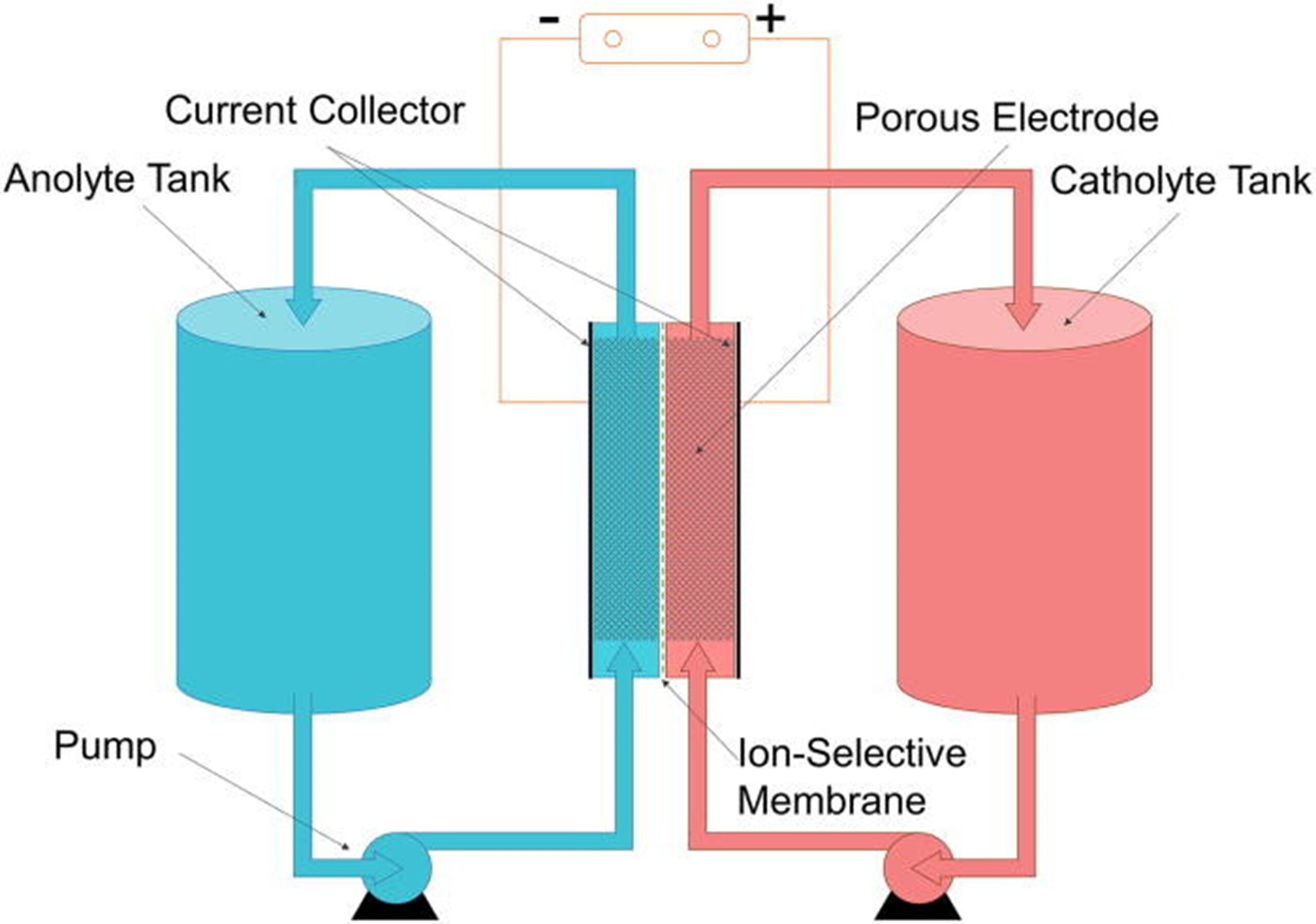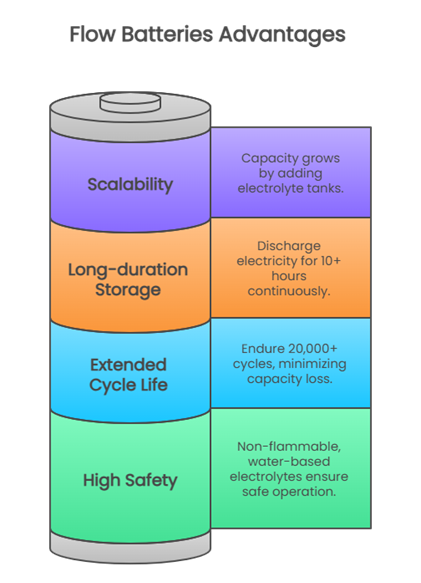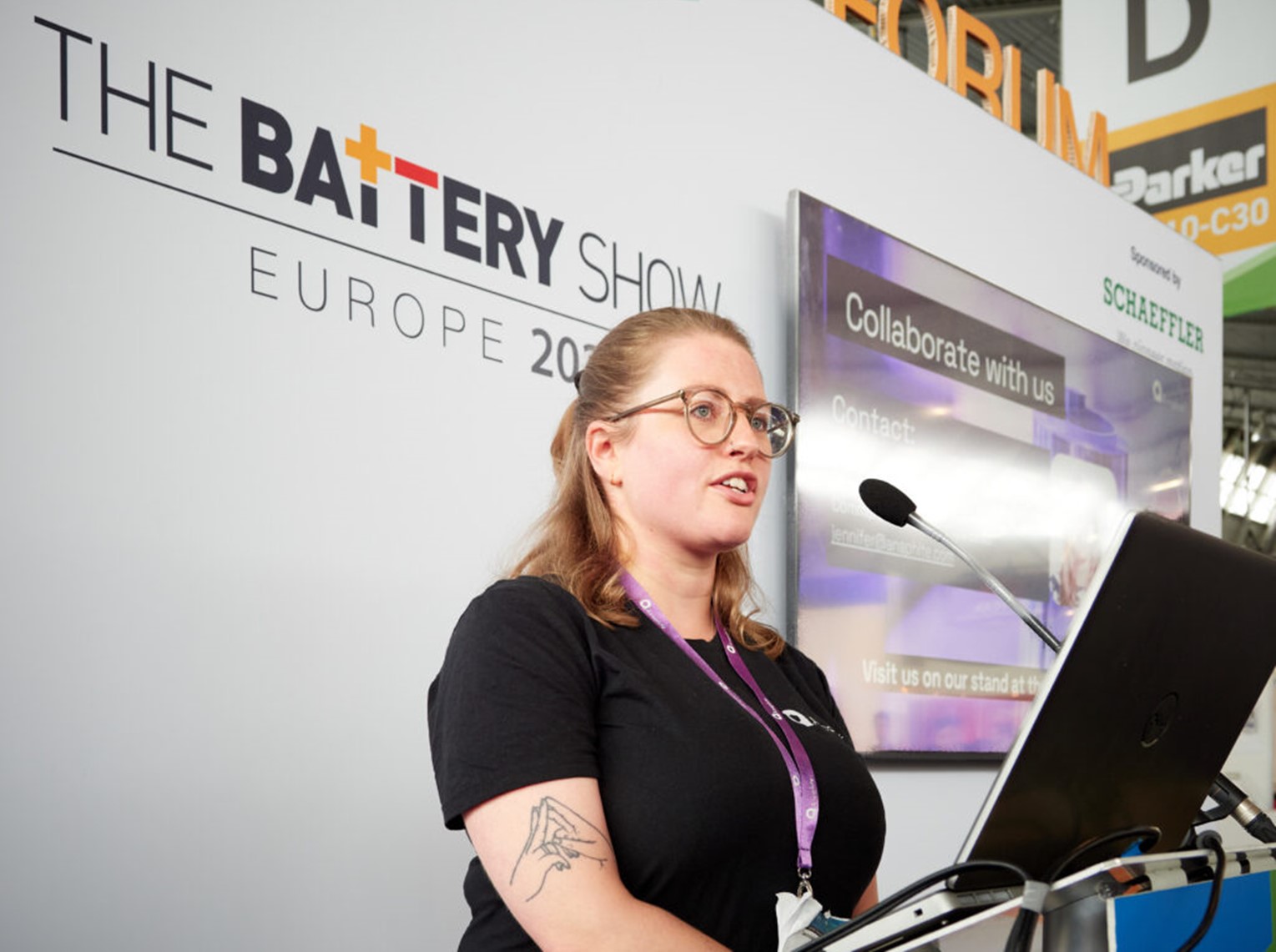What Are Flow Batteries and Why They Matter for Energy Storage
The global shift toward renewable energy demands storage solutions that outlast daily weather shifts and aging infrastructure. Enter flow batteries—a scalable alternative complementing lithium-ion for specific grid storage needs。
Unlike traditional batteries, their unique design decouples energy storage from power delivery, enabling cost-effective scaling for multi-hour backup and grid stabilization.
As industries seek durable, low-maintenance storage, flow batteries are stepping out of labs.

What Is a Flow Battery?
A flow battery stores energy in liquid electrolytes housed in external tanks, unlike conventional batteries that confine energy within solid electrodes.
During operation, these electrolyte solutions—one positively charged, the other negatively charged—are pumped through a central chamber called a stack, where they interact across a membrane. This separation of energy storage (tank size) from power generation (stack size) allows independent scaling of capacity and output—a feature traditional lithium-ion or lead-acid batteries cannot match.
What sets flow batteries apart from traditional options like lithium-ion is this separation of energy and power components. While conventional batteries store energy within the cell itself, flow batteries decouple the two, offering more design flexibility and better thermal stability.
Among the various types, vanadium redox flow batteries (VRFBs) dominate commercial projects. They use the same element in both tanks (vanadium in different oxidation states), eliminating cross-contamination risks and enabling near-limitless recharging cycles. Other variants, like zinc-bromine or iron-salt systems, trade some durability for lower upfront costs but remain less mature.

Why Flow Batteries Matter for Energy Storage
As renewable energy adoption accelerates, flow batteries address critical gaps in modern storage infrastructure.
Long-duration Storage
Their ability to discharge electricity for up to 10 hours continuously makes them ideal for bridging multi-day gaps in solar or wind generation[1]. This long-duration capability aligns perfectly with grids requiring stable power through nights, calm periods, or extreme weather.
High Safety
Safety is another important advantage. Most flow batteries use water-based electrolytes that are non-flammable and operate at low pressures and temperatures. This makes them a safer alternative to conventional battery technologies, particularly in large-scale or sensitive environments.
Extended Cycle Life
Their longevity further distinguishes them. With 20,000+ charge cycles and minimal capacity loss per cycle, flow batteries endure decades without replacement[2]. This durability translates to lower lifetime costs for applications needing minimal downtime, such as hospital backup systems or off-grid communities.
Scalability
Scalability adds flexibility. A flow battery’s capacity grows simply by adding electrolyte tanks (like expanding a fuel depot), while its power output scales with the stack size. Utilities can thus tailor systems to specific needs.
Applications of Flow Batteries
These traits position flow batteries as pivotal solutions for:
- Utility-scale renewable integration: Storing excess solar/wind for evening peaks.
- Industrial backup power: Safer, maintenance-light alternatives to diesel generators.
- Remote microgrids: Providing 24/7 clean energy in off-grid regions.
- Grid resiliency: Mitigating blackouts during extreme weather events.
Their unique combination of safety, durability, and scalability positions them as a promising solution for the future of energy storage.
Current Challenges and Industry Trends
Despite their advantages, flow batteries face several challenges. The higher initial costs, increased physical size, and reduced energy density in comparison to lithium-ion batteries restrict their use in compact or mobile applications.
However, ongoing research is focused on developing more efficient materials, reducing system complexity, and lowering manufacturing costs. Innovations in electrolyte chemistry and stack design are showing promise in improving performance and scalability.
Meanwhile, global interest continues to grow, with pilot projects emerging in Europe, the U.S., and Asia to test flow batteries in grid and renewable integration scenarios. These efforts signal a strong momentum toward making flow battery technology more commercially viable in the near future.

Learn More at The Battery Show Asia 2025
Curious about what’s next for long-duration energy storage? Flow batteries are moving from research labs to real-world applications—and the conversation is just getting started. At The Battery Show Asia 2025 in Hong Kong, the spotlight will be on next-generation technologies that address scalability, safety, and sustainability.
Don’t miss the Tech Session B (15:30–17:20), where experts will dive into the latest breakthroughs in redox flow battery development. Whether you’re working on grid solutions or exploring alternatives to lithium-ion, this is your chance to connect with industry leaders shaping the future of energy.
Mark your calendar and register to be part of the shift!
References
- Flow Battery. Available at: https://www.sciencedirect.com/topics/engineering/flow-battery (Accessed: 28th, May)
- Flow batteries, the forgotten energy storage device. Available at: https://cen.acs.org/materials/energy-storage/Flow-batteries-forgotten-energy-storage/101/i25 (Accessed: 28th, May)


